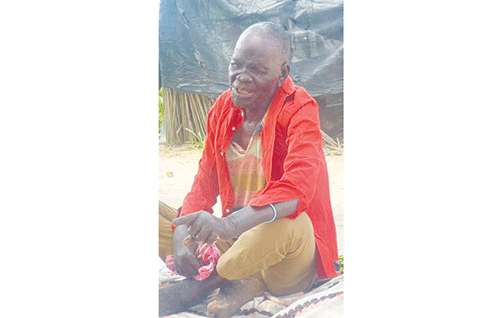Namibia is in its post-elimination phase of leprosy, having met the World Health Organisation (WHO) elimination target of less than one case per 10 000 people in 2004.
Available information by the National Tuberculosis and Leprosy Programme (NTLP) highlights that a few leprosy cases are reported sporadically every year in Namibia. In 2022, about 34 cases were reported, with the team telling Vital Signs that they are still verifying the data for 2023.
However, until September 2023, 22 cases have been reported.
The WHO defines leprosy, also known as Hansen’s disease, as a chronic infectious disease caused by Mycobacterium leprae. Also referred to as biblical leprosy, the disease affects the skin, the peripheral nerves, mucosal surfaces of the upper respiratory tract, and the eyes. Leprosy is known to occur at all ages, ranging from early childhood to old age.
The disease is curable, and treatment during early stages can prevent disability. It is transmitted via droplets from the nose and mouth, during close and frequent contact with untreated cases.
Dr Katri Nangula Kalukambe, the senior medical officer at the health ministry, said the majority of cases were reported in the Zambezi and Kavango regions, with one or two other cases coming annually from the northern regions of Ohangwena, Omusati, Oshana and Oshikoto, as well as Kunene. Occasionally, cases turn up in specialist clinics in Windhoek.
“There is a Directorate of Special Programmes (DSP) under the Ministry of Health, where we have a sub-division dealing with leprosy, and a focal person for this disease. Medical officers and healthcare workers have been trained to screen, test and diagnose leprosy,” she noted.
“Treatment is provided free of charge. Patients are also referred to social workers and rehabilitation officers to ensure holistic treatment. Patients are assessed for disability to enable them to receive disability assistance. There are specialist skin doctors (dermatologists) in the big hospitals who see a high number of leprosy patients,” stated Kalukambe.
In addition, the National TB and Leprosy Programme under the directorate of special programmes of the health ministry has developed a national strategic plan, which has activities and various interventions to address leprosy in the country, and through this, the programme implements leprosy control activities.
There is currently no specialised facility aiding in the control of the disease, Kalukambe said, adding that there was the Mashare leprosarium in the Kavango region in the 1970s, but it was closed during the war because of the great stigma and discrimination that it posed on the affected patients.
She indicated: “This disease is considered a neglected tropical disease, and occurs mainly in the warmer regions of the world. It hasn’t killed anyone in the last two years, but causes disabilities, grade 2.” Meanwhile, the latest WHO data published in 2020 shows that leprosy deaths in Namibia reached 0 or 0.00% of total deaths. The age-adjusted death rate is 0.00 per 100 000 population, and ranks Namibia #121 in the world.
WHO director general Dr Tedros Adhanom Ghebreyesus on the observance of World Leprosy Day on 28 January said to achieve a world free of leprosy and the problems it causes, medical interventions are not enough.
“As we move towards the interruption of transmission and elimination of leprosy, we must also address the social and psychological aspects of the disease.
Stigma contributes to hesitancy to seek treatment, putting people at risk of disabilities and contributing to ongoing transmission. Eliminating leprosy, therefore, requires not only renewed political commitment and access to services to treat it, but also awareness-raising to mitigate stigma and increase social participation for those affected by leprosy,” stated Ghebreyesus.


